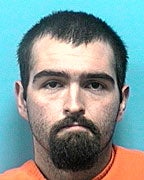Witnesses describe night of Pelham triple-homicide
Published 11:34 pm Friday, October 17, 2014
By MOLLY DAVIDSON / Staff Writer
COLUMBIANA—The prosecution and defense both gave closing arguments on Oct. 17 in a triple homicide trial regarding the deaths of three men found shot inside a Pelham home on Sept. 9, 2012.
Jon Ingram Staggs Jr., 22, of Pelham, was arrested on Sept. 9, 2012, and charged with the murders of Simeon Gilmore, 19, Casey Cumberland, 22, and Joshua Smith, 22, after Pelham Police found the three men deceased at a residentce in the 2400 block of Chandabrook Drive.
Staggs is currently on trial in front of Judge Dan Reeves and is facing five capital murder charges. In Alabama, a capital murder conviction carries a punishment of life in prison without parole or the death penalty.
During the closing arguments, both the defense and the prosecution described the evening of Sept. 8, 2012, as a night out in which Gilmore, Cumberland, Smith, Staggs and fifth man, Jeremiah Mullins, all crossed paths at Club NV, a downtown Birmingham club.
While at Club NV, Staggs sold Gilmore $40 worth of marijuana, however Gilmore did not have the money to pay Staggs at the time, both the defense and the prosecution stated. All five men left downtown Birmingham and agreed to meet up again at Smith’s house in Pelham’s Chanadalar subdivision.
Staggs made two stops at Smith’s house on Chandabrook Drive in the morning hours of Sept. 9, 2012. Arriving for the first time with Mullins, before Smith, Gilmore and Cumberland. According to testimony from Mullins, Staggs broke into the house and took items including a PS3, which was recovered from his truck.
The prosecution painted a picture of Mullins as an unwilling participant, while the defense described a team dynamic between Mullins and Staggs.
Staggs and Mullins left the Smith house around 6:20 a.m., and Staggs returned to the house alone for a second time around 7:30 a.m. on Sept. 9, 2012, where he allegedly encountered and killed Gilmore, Cumberland and Smith.
Both the prosecution and defense focused closing arguments on this second trip to Chandabrook Drive.
While defense attorney Herbie Brewer admitted Staggs was “culpable for some of that behavior” at the Chandabrook Drive residence on Sept. 9, 2012, he argued the state did not meet the burden of proof for a capital murder charge “beyond a reasonable doubt.” According to the defense, Staggs did not enter the house with the intent to kill any of the occupants.
According to Brewer, Staggs returned to Chandabrook Drive to get his $40 from Gilmore. The conversation with Gilmore turned aggressive and Brewer suggested Gilmore attempted to attack Staggs. Staggs felt threatened by the 6-foot 10-inch, 310 pound Gilmore, Brewer said. Staggs jumped up onto the couch to avoid him, leaving footprints on a cushion, and in a “split second” decision, shot five bullets at him, three striking and killing Gilmore, Brewer explained.
“If you think someone is going to hurt you, you don’t have to wait for them to hurt you (to defend yourself),” Brewer said to the jury.
The encounter with Gilmore put Staggs into the “frame of mind that he is fighting,” Brewer said. While attempting to leave the house, Brewer said Staggs encountered Cumberland exiting a bedroom. Brewer suggested there was a struggle ending in the shooting of Cumberland.
Finally, Brewer addressed the killing of Smith with a single gunshot to the head as Staggs left the house.
The prosecution argued that Staggs’ actions substantiate capital murder and he intentionally killed Gilmore, Cumberland and Smith. Assistant District Attorney Jeff Bradley gave the initial closing argument and Assistant District Attorney Alan Miller gave the final closing statements.
“Three young men were brutally executed… hunted down in a house on Chandabrook drive,” Bradley said to the jury.
Miller said Staggs returned to Chandabrook Drive, saw Cumberland’s car in the driveway and made the decision to carry a gun into the house with him.
Staggs first encountered Gilmore seated in the living room, Bradley suggested, and due to the angles of Gilmore’s bullet wounds, Staggs shot him while he was “on his knees or while he was sitting.”
Staggs then proceeded to the room where Cumberland was and encountered him laying in bed, not in the hallway as the defense suggested, Bradley said, noting blood allegedly was found on the mattress and comforter. Cumberland was shot through the middle, the arm and finally the side of the head.
Bradley said although the house appeared ransacked, this was not the result of a struggle with either Gilmore or Cumberland as there was only a “single drop of Casey Cumberland’s blood on Staggs.”
Finally, Staggs proceeded downstairs where he found Smith asleep on the couch and allegedly killed him with one shot to the head, Bradley said.
“He shot Casey Cumberland in the head point blank. That’s an intentional murder. He shot Josh Smith in the head one time, that’s an intentional murder,” Miller said to the jury.
The trial will resume again on Oct. 20 at 10 a.m. Reeves will explain the law and the charges Staggs is facing to the jury at that time, and then the jury will deliberate.










